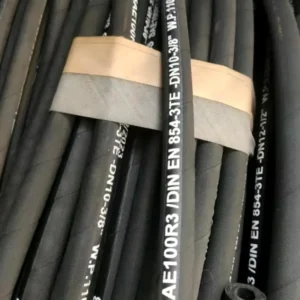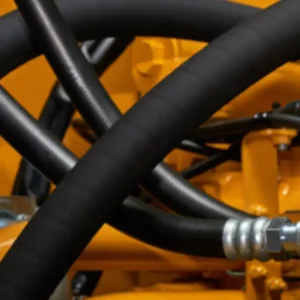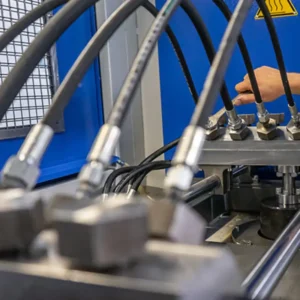As hydraulic hose suppliers, we often get asked about the specifications that matter most. While every detail is crucial, nothing is more fundamental to safety and performance than a hose’s working pressure. For heavy-duty applications, the 4SP hose working pressure is a critical specification you can’t afford to overlook. This guide is designed to provide you with an in-depth understanding of what working pressure means, why it’s so important for 4SP hoses, and how to ensure you’re always using the right hose for the job.
What is a 4SP Hydraulic Hose?
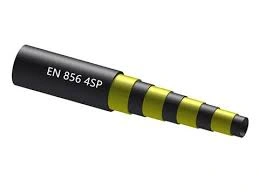
A 4SP hydraulic hose is a specialized component engineered to withstand extremely high pressures in demanding environments. This is a topic we’re passionate about because its robust design is what sets it apart. The “4” in its name refers to the four layers of high-tensile steel wire spirals, which are strategically layered for superior strength and flexibility. These inner and outer layers of rubber protect the steel from abrasion and the hydraulic fluid from contamination, making it a powerful solution for heavy machinery.
In the world of hydraulic systems, not all hoses are created equal. The robust construction of a 4SP hose is specifically designed for applications where high pressure and constant impulses are the norm. The four spiral layers provide a level of reinforcement that is far superior to standard braided hoses, making it the ideal choice for heavy-duty equipment like excavators, mining machinery, and large-scale construction vehicles. When we supply a 4SP hose, we’re providing a product built for reliability and longevity under the most challenging conditions.
Decoding 4SP Hose Working Pressure
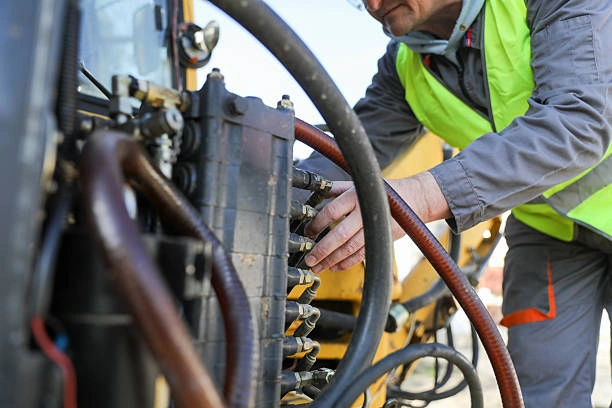
Working pressure is the maximum pressure at which a hydraulic hose can operate continuously and safely. It is the most important rating you must consider when selecting a hose. Understanding what this rating means for a 4SP hose working pressure is essential for preventing catastrophic failures. It’s not just a number on a specification sheet; it’s the absolute limit of the hose’s operational safety.
When we talk about hydraulic hose pressure, two key terms come into play: working pressure and burst pressure. The working pressure, which is also sometimes referred to as the operating pressure, is the pressure the hose is designed to handle on a day-to-day basis. Burst pressure, on the other hand, is the theoretical pressure at which the hose would fail. The ratio between these two is the “safety factor.” For an EN 856 4SP hose, the industry-standard safety factor is typically 4:1, meaning the burst pressure is at least four times the working pressure. This safety margin is built into the design to account for pressure spikes and other unforeseen stresses, ensuring the hose remains a dependable component in your system.
| Hose Size (DN/ID) | Working Pressure (Bar) | Working Pressure (PSI) | Common Applications |
| 19mm (3/4 inch) | 350 | 5075 | Excavators, Cranes |
| 25mm (1 inch) | 320 | 4640 | Drilling Rigs, Forestry |
| 31mm (1 1/4 inch) | 250 | 3625 | Large Earthmovers |
| 38mm (1 1/2 inch) | 210 | 3045 | Mining Equipment |
Why is the Correct Working Pressure Critical?
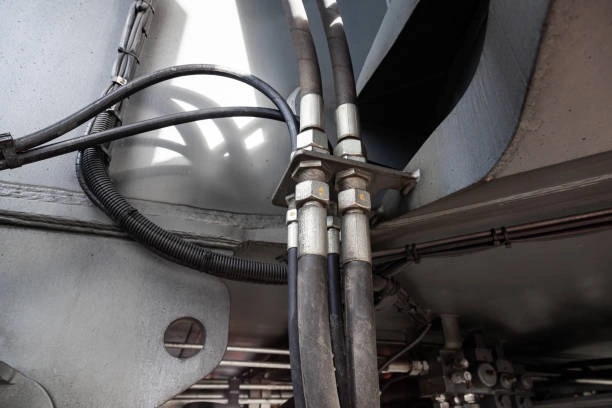
Using a hose with an incorrect pressure rating is one of the most common causes of hydraulic system failure. Ignoring the recommended 4SP hose working pressure can lead to a domino effect of dangerous and costly consequences. It’s a risk that no operator or company should ever take, which is why we always emphasize matching the hose to the system’s requirements precisely.
- Ensuring Operator Safety: The most severe consequence of a hose failure is the risk it poses to people. When a hose bursts under high pressure, it can release a jet of fluid that is powerful enough to penetrate skin, causing severe injuries. A sudden hose rupture can also cause machinery to lose control, leading to accidents. By selecting the correct hydraulic hose working pressure, you are prioritizing the safety of your team and anyone working near the equipment.
- Maximizing System Performance: A hose that is constantly operating at or beyond its pressure limit will not perform efficiently. The hose may expand or weaken over time, leading to pressure drops that compromise the hydraulic system’s power. This results in slower, less effective machine operation.
- Preventing Costly Downtime: A burst hose means a machine is out of commission. The cost of a new hose is often minimal compared to the loss of productivity and the labor costs associated with fixing the issue. By investing in a high-quality hose with the correct pressure rating from the start, you are preventing unexpected breakdowns and saving your business money and time in the long run.
Factors Affecting 4SP Hose Performance

While 4SP hose working pressure is the headline specification, several other factors influence a hose’s lifespan and reliability. As your hose experts, we believe a holistic approach to hose maintenance and selection is key. Understanding these additional variables can significantly extend the life of your hose and ensure it operates safely and efficiently.
- Temperature: Both the temperature of the hydraulic fluid and the surrounding environment can affect hose performance. Exposing a hose to temperatures outside its specified range can cause the rubber compounds to harden or soften prematurely, leading to a loss of pressure rating and eventual failure.
- Bending Radius: Every hose has a minimum bending radius, and it’s a non-negotiable specification. Bending a hose too tightly puts immense stress on the wire reinforcement, causing it to kink or fatigue. This can lead to a localized weakening of the hose, making it susceptible to bursting at a lower pressure than its rated 4SP hose working pressure.
- Abrasion: Even the toughest hose can be damaged by constant rubbing against other machine parts or rough surfaces. Abrasion can wear through the outer cover, exposing and eventually weakening the steel wire reinforcement. We highly recommend using protective sleeving in areas where abrasion is a risk to protect your investment.
- Fluid Compatibility: It’s crucial to ensure that the hose’s inner tube material is compatible with the hydraulic fluid being used. Using an incompatible fluid can cause the inner tube to degrade, leading to contamination of the hydraulic system and a complete loss of integrity.
How We Ensure Our Hoses Meet Standards
Our reputation as a trusted hose supplier is built on our unwavering commitment to quality and safety. We understand that our customers rely on us to provide products that perform as promised. That’s why every 4SP hose we supply is manufactured and tested to the most stringent international standards, giving you complete confidence in your equipment.
We adhere strictly to standards like EN 856 4SP, which sets the benchmark for hydraulic hose performance. Our manufacturing process includes rigorous quality control checks at every stage, from raw material sourcing to final product inspection. We conduct internal pressure testing to ensure every hose not only meets but exceeds the specified 4SP hose working pressure and burst pressure requirements.
A Comparison of High-Pressure Spiral Hoses
To help you better understand the niche that the 4SP hose fills, it’s helpful to see how it compares to other high-pressure hoses in the market. While they may look similar, their construction and applications can vary significantly.
| Hose Type | Construction | Key Difference | Typical Working Pressure | Ideal Applications |
| 4SP | 4 layers spiral wire | Medium-high pressure, tighter bend radius | Up to 5,075 PSI (350 Bar) | Construction, Mining, General high-pressure lines |
| 4SH | 4 layers spiral wire | High pressure, heavier-duty than 4SP | Up to 6,090 PSI (420 Bar) | Extreme pressure, heavy-duty applications |
| R12 | 4 layers spiral wire | High pressure, continuous flexing | Up to 4,000 PSI (275 Bar) | Continuous-flex applications in high-pressure systems |
Conclusion
Understanding the operating pressure of 4SP hoses is more than just a technical specification; it’s crucial for making informed decisions that impact the safety, efficiency, and lifespan of your hydraulic system. We hope this guide provides insight into the importance of choosing the right hose and the factors that influence its performance.
We’re more than just a supplier; we’re your partner, ensuring your hydraulic system operates safely and efficiently. If you have any questions about hydraulic hose selection, specific 4SP hose specifications, or need guidance on a specific application, please feel free to contact us. Our team of experts is always here to provide the support and high-quality products you need for success.

